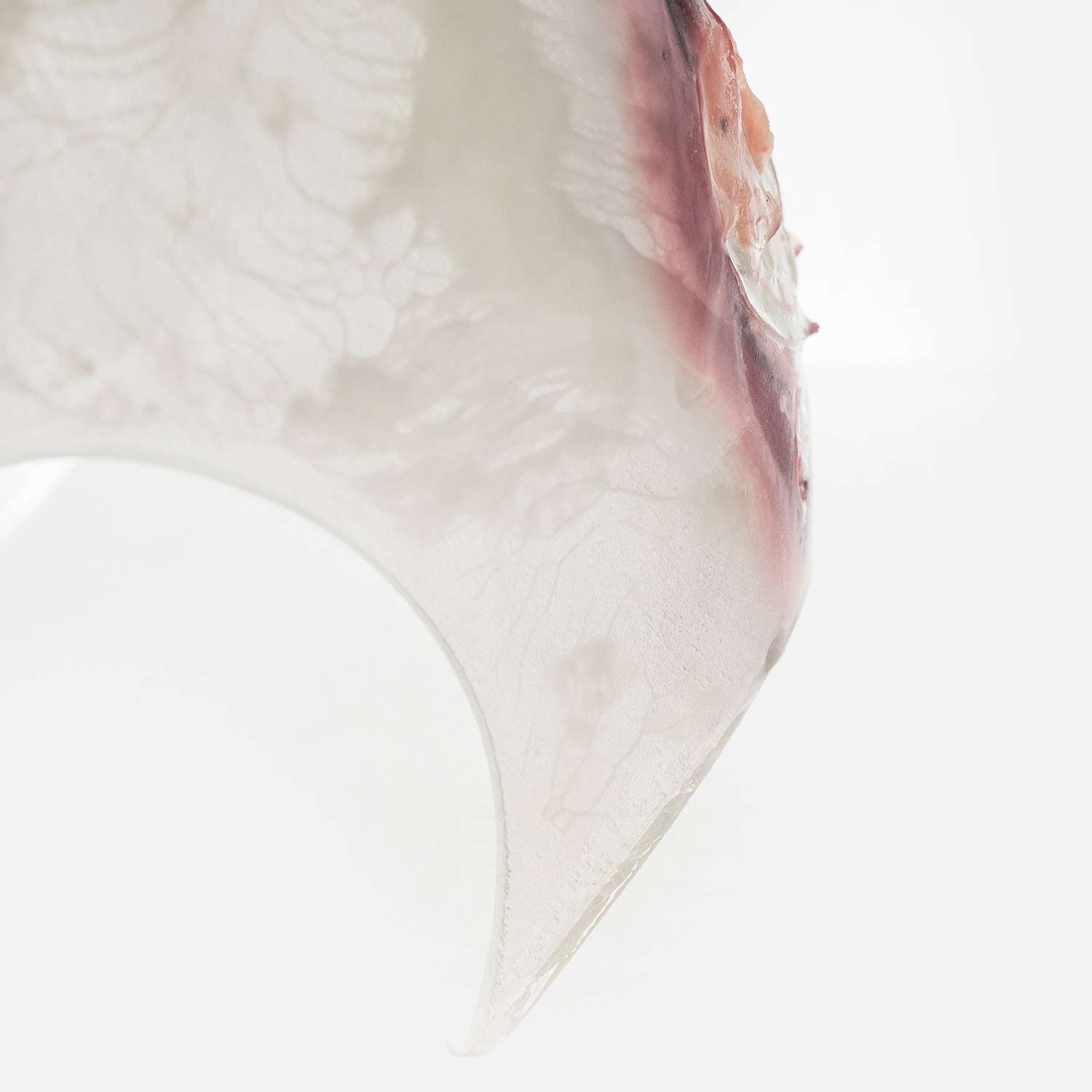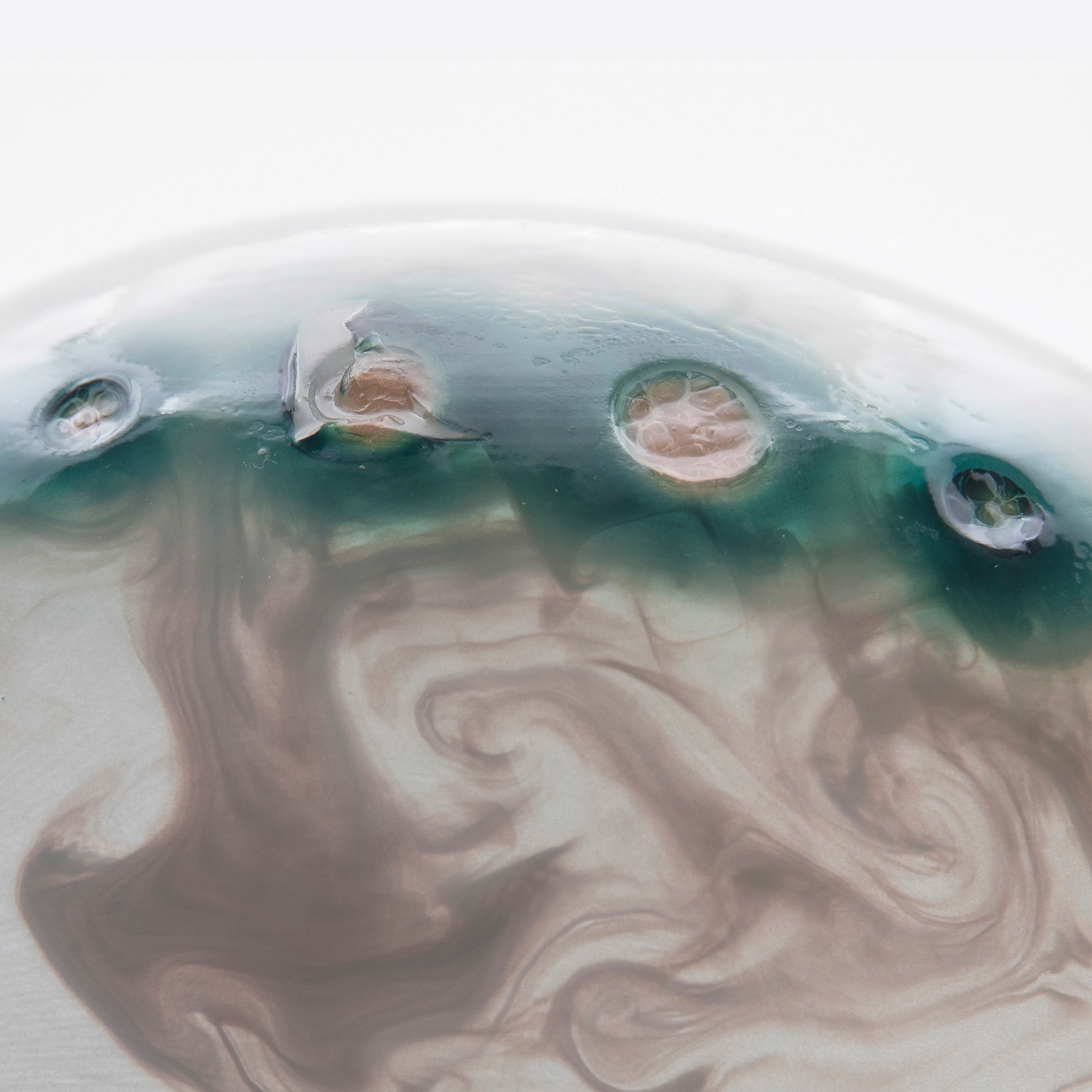Vespers III
Vespers III | 2017 |
Christoph Bader, Rachel Soo Hoo Smith, Dominik Kolb, Sunanda Sharma, Prof. Neri Oxman
.
Synopsis
Vespers is a collection of masks exploring what it means to design (with) life. From the relic of the death mask to a contemporary living device, the collection embarks on a journey that begins with an ancient typology and culminates with a novel technology for the design and digital fabrication of adaptive and responsive interfaces. We begin with a conceptual piece and end with a tangible set of tools, techniques and technologies combining programmable matter and programmable life.
The project points towards an imminent future where wearable interfaces and building skins are customized not only to fit a particular shape, but also a specific material, chemical and even genetic make-up, tailoring the wearable to both the body and the environment which it inhabits.
Imagine, for example, a wearable interface designed to guide ad-hoc antibiotic formation customized to fit the genetic makeup of its user; or, consider smart packaging or surface coatings devices that can detect contamination; finally, consider environmentally responsive architectural skins that can respond to, and adapt—in real time—to environmental cues. Research at the core of this project offers a new design space for biological augmentation across a wide breadth of application domains, leveraging resolution and scale.
The collection includes three series. The first series features the death mask as a cultural artefact. The final series features a living mask as an enabling technology. The second series mediates between the two, marking the process of ‘metamorphosis’ between the ancient relic and its contemporaneous interpretation.
The living masks in the final series embody habitats that guide, inform and ‘template’ gene expression of living microorganisms. Such microorganisms have been synthetically engineered to produce pigments and/or otherwise useful chemical substances for human augmentation such as vitamins, antibodies or antimicrobial drugs.
Combined, the three series of the Vespers collection represent the transition from death to life, or from life to death, depending on one’s reading of the collection
General Description
What remains once life has been lived? Can the death mask drive the formation of new life? The third series revolves around death and rebirth, denoting both spiritual incarnation and biological recapitulation. In it, the masks become habitats for microorganisms and sites for the creation of new life.
Devoid of cultural expressions and initially nearly colorless, these masks are paradoxically the most ‘alive’ of the three series. They literally ‘re-engineer’ life by guiding living microorganisms through miniscule spatial features within the artifacts of the dead. Their microorganisms are distributed according to the spatial logic provided by the second series.
These masks—now living things unto themselves—feature patterns generated by genetic regulatory signals distributed according to the spatial logic provided by the second series. The microorganisms and their byproducts, which animate the mask with properties greater than the sum of its parts, reinterpret the color palette of the first series and thereby biologically recreate their cultural precursors.
Transitioning from vessels of representative neuro-vasculature to actual biological urns, the masks in this series mark a new cycle of life and the notion of continuation. The martyr’s faces are no longer preserved but have transformed into sites of and for new life.




Technical Description
The third series in the Vespers collection combines living and non-living materials into hybrids. The body of research underlying this series involves novel tools and techniques that enable tight integration between, and control of, designed and biologically derived properties.
In this series, we integrate computational design with additive manufacturing and synthetic biology to digitally fabricate objects that direct living microorganisms to produce pigments that emulate the colors of the first series of the collection.
We leverage 3D printable bioactive materials to spatially template the biological response of living microorganisms. Thus, computational and digital fabrication tools are customized to direct the growth and expression of biological microorganisms contained within the mask.
Our research enables the computational design and digital fabrication of consumer products and freestanding structural materials. From customized cosmeceutical and antibiotic production in wearable devices, to smart packaging and surface coatings that can detect contamination, to environmentally responsive architectural skins, this research offers a new space for biological augmentation across a wide breadth of application domains, by leveraging both resolution and scale.
Acknowledgements
Jeremy Flower, Kelly Egorova, Ahmed Hosny, Wendy Salmon, Tzu Chieh Tang, Noah Jakimo, Naomi Kaempfer, Boris Belocon, Gal Begun, MIT Environmental Health and Safety, Media Lab Facilities, The Center for Bits and Atoms
The Vespers series was created in collaboration with Stratasys for the New Ancient collection.
The Vespers series was created in collaboration with Stratasys for the New Ancient collection.
.